Mint – bo he,Mint herb,Dried Mint,Mint tcm,bo he herb,bo he tcm,medicinal mint,chinese mint,chinese mint herb,dried mint herb,Menthae Haplocalycis Herba,Mint
[Medicinal Use] This product is the stem and leaf of mint, a plant of the Lamiaceae family.
[Nature and flavor and meridians] Spicy, cool. Enters the lung and liver meridians.
[Effects] Disperse wind-heat, clear the throat, and clear rash.
[Clinical Application] 1. Used for colds with wind-heat and febrile diseases with superficial symptoms at the beginning.
Mint is an important medicine for dispersing wind-heat and has a diaphoretic effect. It is mainly used for wind-heat superficial symptoms, no sweating, headache and red eyes, etc. It is often used in combination with schizonepeta, mulberry leaves, chrysanthemum, burdock seeds, etc.; if it is a cold with wind and cold and no sweating, it can also be used with perilla and angelica root.
2. Used for sore throat
Mint has a significant effect of clearing the throat. It is mainly used for sore throat caused by wind and heat. It also has the effect of dispersing wind and heat. It is often used in combination with burdock seeds, puffballs, licorice, etc. It can also be ground into powder and blown into the throat to treat sore throat symptoms.
3. For measles that are not clear. Mint has a clearing effect and can help measles to break out. It can be used together with schizonepeta, burdock seeds, cicada skin, etc. [Prescription name] Mint, mint leaves, Su mint (wash, dry, and chop for use.) [General dosage and usage] 8 fen to 1.5 qian, decocted and taken. It is recommended to be taken later. [Additional medicine] Wild mint: the herbal name is “Jianzhongxiao”, which is widely wild in the suburbs of Shanghai. It can be used to treat nephritis and edema, and is often used together with gourd shells and zygomatic grass. The general dosage is 1 qian to 3 qian, decocted and taken. [Example of prescription] Mint soup “Puji Fang”: mint leaves, burdock, chamomile, licorice. Treat wind-heat attacking the eyes, dizziness and pain. This product is the dried above-ground part of the mint Menthahaplocalvx Brig. of the Lamiaceae family. In the second season of autumn, when the stems and leaves are lush or the flowers bloom to the third round, choose a sunny day, harvest in batches, and dry in the sun or shade.
[Egenskaper]
The stem of this product is square columnar, with opposite branches, 15~40cm long, 0.2~0.4cm in diameter; the surface is purple-brown or light green, with hairs at the corners, and the internodes are 2~5cm long; it is brittle, white in cross section, and hollow in the pith. The leaves are opposite, with short petioles; the leaves are wrinkled and curled, and the intact ones are broad lanceolate, oblong or ovate when flattened, 2~7cm long, 1~3cm wide; the upper surface is dark green, the lower surface is gray-green, sparsely covered with hairs, and there are concave glandular scales. The cyme is axillary, the calyx is bell-shaped, the tip is 5-toothed, and the corolla is light purple. It has a special cool fragrance after rubbing, and tastes spicy and cool.
【Identifiering】
(1) Surface observation of the leaves of this product: the head of the glandular scales has 8 cells, with a diameter of about 90um, and the petiole is single-celled: the head and petiole of the small glandular hairs are both single-celled. The non-glandular hairs have 1 to 8 cells, which are often curved, thick-walled, and slightly warty. The stomata on the lower epidermis are common and straight-axised.
(2) Take a small amount of powder from the leaves of this product, sublimate it into an oily substance, add 2 drops of sulfuric acid and a small amount of vanillin crystals, and it will initially turn yellow to orange-yellow. Add 1 drop of water and it will turn purple-red.
(3) Take 1g of the crude powder of this product, add 10ml of anhydrous ethanol, ultrasonically treat for 20 minutes, filter, and take the filtrate as the test solution. Take another 1g of mint control medicinal material and prepare the control medicinal material solution in the same way. Take the menthol reference substance and add anhydrous ethanol to prepare a solution containing 2mg per 1ml as the reference substance solution. According to the thin layer chromatography method (General Rule 0502), 5~10 μl of each of the above three solutions were taken and spotted on the same-silica gel G thin layer plate, and toluene-ethyl acetate (9:1) was used as the developing agent. After development, it was taken out, dried, sprayed with 2% p-dimethylaminobenzaldehyde in 40% sulfuric acid ethanol solution, heated at 80°C until the spots were clearly colored, and inspected under ultraviolet light (365nm). In the chromatogram of the test sample, fluorescent spots of the same color appeared at the corresponding positions of the chromatogram of the reference medicinal material and the chromatogram of the reference sample.
[Inspektion]
Leaves shall not be less than 30%.
Water content shall not exceed 15.0% (General Rule 0832 Method 4).
Total ash shall not exceed 11.0% (General Rule 2302)
Acid-insoluble ash shall not exceed 3.0% (General Rule 2302). [Content determination)
Volatile oil Take a short section of about 5mm of this product, add 600ml of water for every 100g of the test sample, and keep it slightly boiling for 3 hours according to the volatile oil determination method (General Rule 2204)
This product must contain no less than 0.80% (ml/g) of volatile oil.
Menthol was determined by gas chromatography (General Rule 0521)
Chromatographic conditions and system suitability test: a capillary column with polyethylene glycol as the stationary phase (length 30m, inner diameter 0.32mm, film thickness 0.25um); program temperature rise: initial temperature 70℃, maintained for 4 minutes, first heated to 120℃ at a rate of 1.5℃ per minute, then heated to 200℃ at a rate of 3℃ per minute, and finally heated to 230℃ at a rate of 30℃ per minute, maintained for 2 minutes; injection port temperature 200℃: detector temperature 300℃: split injection, split ratio 5:1: theoretical plate number calculated according to the menthol peak should not be less than 10000
Preparation of reference solution: take an appropriate amount of menthol reference, accurately weigh, and add anhydrous ethanol to make a solution containing 0.2mg per 1ml.
Preparation of test solution Take about 2g of the powder (passed through No. 3 sieve), weigh accurately, put it in a county stopper conical bottle, accurately add 50ml of anhydrous ethanol, seal it, weigh it, ultrasonically treat it (power 250W, frequency 33kHz) for 30 minutes, let it cool, weigh it again, make up the lost weight with anhydrous ethanol, shake it well, filter it, and take the filtrate to get it. Determination method Accurately take 1u of reference solution and test solution respectively, inject it into gas chromatograph, and determine it to get it. This product contains no less than 0.20% menthol (C10H200) calculated on the basis of dry product.
Avkoksbit
[Bearbetar]
Remove old stems and impurities, spray water slightly, moisten it slightly, cut it into short sections, and dry it at low temperature in time.
[Egenskaper]
This product is in irregular sections. The stem is square columnar, the surface is purple-brown or light green, with longitudinal ridges, and hairs at the corners. The cut surface is white and hollow. The leaves are mostly broken, dark green on the upper surface, gray-green on the lower surface, and sparsely covered with hairs. The cymes are axillary, the calyx is bell-shaped, with 5 teeth at the tip, and the corolla is lavender. After rubbing, it has a special cool fragrance and tastes spicy and cool.
[Inspektion]
Vattenhalten är densamma som det medicinska materialet, inte mer än 13.0%.
[Bestämning av innehåll]
Volatile oil is the same as the medicinal material, and the volatile oil content shall not be less than 0.40% (ml/g).
Menthol is the same as the medicinal material, calculated on the basis of dry product, and the menthol content (C10H200) shall not be less than 0.13%.
[Identification] [Inspection]
(Total ash acid-insoluble ash) is the same as the medicinal material.
[Natur och smak och meridianer]
Spicy, cool. It enters the lung and liver meridians.
[Funktioner och indikationer]
Disperse wind-heat, clear the head and eyes, relieve sore throat, clear rash, and soothe the liver and promote qi. It is used for wind-heat cold, initial onset of wind-heat, headache, red eyes, throat paralysis, mouth sores, rubella, measles, and chest and flank distension.
【Användning och dosering】
3~6g, lägg till senare.
【Lagring】
Place in a cool and dry place.
Where is the main production area of mint?
It is mainly produced in Jiangsu and Zhejiang.
Where is the main medicinal part of mint?
Medicinal part of mint:
This product is the dried aerial part of Mentha haplocalyx Briq., a plant of the Lamiaceae family.
Characteristics of the medicinal part of mint:
This product is in irregular segments. The stem is square columnar, the surface is purple-brown or light green, with longitudinal ridges, and the edges and corners are hairy. The cut surface is white and hollow. The leaves are mostly broken, the upper surface is dark green, the lower surface is gray-green, and sparsely covered with hair.
Umbels are axillary, the calyx is bell-shaped, the tip is 5-toothed, and the corolla is light purple. After rubbing, it has a special cool fragrance and tastes spicy and cool.
How are mint recorded in historical books?
“Compendium of Materia Medica”: “It can remove anger, induce toxic sweat, stop dysentery, and clear joints.
“Prescriptions for Emergencies·Volume 26·Food Therapy”: “It can remove kidney qi and make people’s breath fragrant and clean. It can ward off evil spirits and eliminate fatigue. “Newly Revised Materia Medica”: “It can treat typhoid fever, typhoid fever, sweating, bad breath, fullness in the heart and abdomen, cholera, indigestion, and lowering of qi. “Southern Yunnan Materia Medica”: “It can clear the head and eyes of various winds, stop headaches, dizziness, and fever. It can remove wind and phlegm, treat colds and coughs, brain leakage, and runny nose. It can also reduce fever caused by tuberculosis.
“Compendium of Materia Medica Volume 14”: “Mint, pungent and dispersing, cool and clearing, specializes in dispelling wind and heat. Therefore, it is an important medicine for headache, head wind, eye, throat, oral diseases, children’s fright, scrofula, sores and scabies.
“Compendium of Materia Medica Seeking Truth”: “Mint, pungent and cool in smell, specializes in liver and lungs.
Functions and effects
Mint has the functions of dispersing wind-heat, clearing the head, sore throat, clearing rashes, and soothing the liver and promoting qi.
What are the main effects and clinical applications of mint?
Mint is used for wind-heat cold, the initial onset of wind-heat, headache, red eyes, throat paralysis, mouth sores, rubella, measles, chest and flank distension.
Wind-heat exterior syndrome, initial onset of febrile disease
Often used with Forsythia suspensa, Nepeta tenuifolia, Burdock seeds, etc.
Headache, red eyes, sore throat
·For dizziness and vertigo caused by wind-heat attacking the upper body, it can be used together with Chuanxiong, Gypsum, and Jing;
·For red eyes and excessive tears caused by wind-heat attacking the upper body, it is often used together with mulberry leaves, chrysanthemums, and horsetails;
·For wind-heat congestion and sore throat, it is often used together with Platycodon grandiflorum, Periostracum Cicadae, and Fructus Arctiae.
Measles not breaking out, itching of rubella
·For the initial onset of measles, the rash is not smooth, it is often used together with Periostracum Cicadae, Fructus Arctiae;
·For itching of rubella skin, it is often used together with Nepeta, Saposhnikovia, Bombyx Batryticatus.
Syndrom av leverdepression och qi-stagnation
Symptoms include chest and flank pain, lower abdominal distension and pain, irregular menstruation, breast distension and pain, etc. It is often used together with Bupleurum, White Peony, and Angelica.
What other effects does mint have?
In my country’s traditional food culture, some Chinese medicinal materials are often widely consumed as food ingredients among the people, that is, substances that are both food and Chinese medicinal materials according to tradition (i.e. edible medicinal substances). According to the documents issued by the National Health Commission and the State Administration for Market Regulation, mint can be used as both medicine and food within a limited range of use and dosage.
The commonly used medicinal diet recipes for mint are as follows:
Fever, headache, sore throat, and uncomfortable expectoration for people with weak constitution or wind-heat cold in the elderly
30g mint leaves, 2 slices of ginger, 5g ginseng, 30g gypsum, and 2g ephedra.
Grind them into powder, decoct in water, filter the juice, and drink as tea.
Headache, red eyes, red and swollen throat, abdominal distension, etc.
Mint and sugar in appropriate amounts. Soak in boiling water and drink.
Headache, fever, red eyes, sore throat, poor initial outbreak of measles, wind-heat cold in summer, etc.
30g fresh mint (10g dried mint), 30g polished rice, and a little rock sugar. Boil mint to extract concentrated juice; take another rice and add well water to cook porridge, add half of the mint juice, boil again, add rock sugar to dissolve. Eat once in the morning and evening, warm. Avoid using glutinous rice.
Tinnitus and deafness caused by phlegm and qi stagnation
Tangpi 10g, water chestnut 10g, mint 6g, decoct to extract juice, drink as tea.
What are the compound preparations containing mint?
Gaoganshu Granules
Disperse wind and heat, release and clear lung. Used for wind-heat cold, headache and fatigue, fever and chills, nasal congestion and runny nose, cough and pain. Qingxuan Pills
Disperse wind and clear heat. Used for wind-heat dizziness, hemiplegia, nasal congestion and toothache. Xiaoyao Pills
Soothe the liver and strengthen the spleen, nourish blood and regulate menstruation. Used for depression, chest and flank pain, dizziness, loss of appetite, and irregular menstruation caused by liver depression and spleen deficiency.
Niuhuang Shangqing Pills
Clear heat and purge fire, disperse wind and relieve pain. Used for headache, dizziness, red eyes, tinnitus, sore throat, mouth sores, sore gums, and dry stool caused by internal heat and toxicity, and wind and fire attack.
Sangjuyin
Dispels wind and heat, clears lungs and relieves cough. Indications: Initial onset of wind-heat, mild symptoms of superficial heat. Cough, mild fever, weak mouth, and floating pulse
Ganluxiaoduwan
Aromatic dampness, clears heat and detoxifies. Used for summer heat and dampness accumulation, fever and thin limbs, chest tightness and abdominal distension, red urine and jaundice.
Yinqiaosan
Pungent and cool, penetrates the surface, clears heat and detoxifies. Used for exogenous wind-cold, fever and headache, dry mouth and cough, sore throat, and short and red urine.
Yinqiaojiedu Tablets
Dispel wind and relieve the surface, clear heat and detoxify. Used for wind-heat cold, symptoms include fever, headache, cough, dry mouth, and sore throat.
Modern research progress on mint
This product has multiple pharmacological effects such as sweating, antipyretic, analgesic, sedative, anti-pathogen, antispasmodic, inhibiting gastrointestinal smooth muscle contraction, gallbladder, stone removal, and promoting transdermal absorption.
Den vanligaste frågan från patienter
Can mint leaves relieve itching?
Yes. Peppermint oil can stimulate the cold receptors of nerve endings to produce a cold sensation, and reflexively cause changes in deep tissue blood vessels to play an anti-inflammatory, analgesic, antipruritic, local anesthesia and anti-irritation role.
Can mint cure cough?
Yes. Mint is a traditional Chinese medicine with a pungent and cool effect. It has the functions of dispersing wind-heat, clearing the head, relieving sore throat, clearing rash, and soothing the liver and promoting qi. Mint contains some chemical nutrients, including menthol, menthone, limonene, camphor, etc. These rich nutrients can enhance the body’s immunity, inhibit pathogens such as viruses and bacteria that enter the human body, and protect the respiratory mucosa. Therefore, mint has a certain good effect on treating cough. It is generally used clinically to treat headaches, sore throats, coughs and other symptoms caused by influenza, common colds, bronchitis, etc.
Användande
Mint leaves are good at sweating and relieving symptoms, while mint stems are good at promoting qi and harmonizing the middle. It can be taken as a decoction, or boiled in water or porridge. But no matter which method is used, it needs to be taken according to the doctor’s instructions.
How to use mint correctly?
When mint decoction is taken orally, the usual dosage is 2~10g.
When mint is used externally, take an appropriate amount of fresh products and pound them or pound them to apply juice, or boil them to wash or gargle.
Mint contains a large amount of volatile oil, so it should be added later when decocted.
Mint is generally used in decoctions, decocted and taken, or made into powder or pills. However, the use of Chinese medicinal materials must be differentiated and treated, and should be used under the guidance of professional Chinese medicine practitioners. It should not be used at will, and it is even more forbidden to listen to Chinese medicine prescriptions and advertisements at will.
In addition, mint can also be used for daily health care. Common ways of consumption are as follows:
· Cook porridge (mint porridge): 30 grams of fresh mint or 15 grams of mint. First, boil the mint and then remove the mint and keep the juice; cook porridge with rice stems. When the porridge is almost done, add mint soup and a little rock sugar and boil it. It has the effects of refreshing the mind, dispersing wind and heat, increasing appetite, and helping digestion. Make tea (mint tea): Use mint leaves to make tea. Drinking it has a cool feeling and has the effect of clearing heat and diuresis.
How to prepare mint?
Mint
Remove old stems and impurities, spray with water, moisten slightly, cut into short sections, and dry at low temperature in time. Honey mint
Take refined honey and dilute it with an appropriate amount of boiling water, add clean mint and mix well, simmer for a while, put it in a pot, fry it over low heat until it is slightly yellow and not sticky, take it out and cool it. For every 100kg of mint, use 35kg of refined honey.
Bruksanvisning
Mint is aromatic and pungent, and it can cause sweating and consumes qi, so it is not suitable for people with spontaneous sweating due to deficiency of the exterior
What are the precautions when using mint?
It is not suitable for people with weak constitution and excessive sweating.
·Dietary taboos: Avoid eating raw, cold, sticky, and spicy foods
Pregnant and lactating women: If you are pregnant, planning to be pregnant, or are lactating, please inform your doctor in time and consult whether Chinese medicine can be used for treatment.
·Barn: Barnmedicinering måste utföras under ledning av en läkare och vuxen tillsyn.
Förvara läkemedlet på rätt sätt och ge inte läkemedlet du använder till andra.
How to identify and use mint?
·Mint and burdock can both dispel wind-heat, clear rash, and relieve sore throat. They can be used for exogenous wind-heat or early stage of febrile disease, fever, slight aversion to wind and cold, headache; early stage of measles, poor rash; urticaria itching; wind-heat attack, sore throat and other symptoms.
But mint is pungent, cool and aromatic, light and cool, and has a strong sweating power, so mint is the first choice for people with exogenous wind-heat, fever and no sweating. And mint can clear the head and eyes, soothe the liver and promote qi.
Burdock seeds are pungent, dispersing, bitter and laxative, cold and slippery in nature, and can also clear the lungs and dispel phlegm. Therefore, burdock seeds are particularly suitable for people with exogenous wind-heat, fever, cough, and difficulty in expectoration.
At the same time, burdock seeds can dissipate wind-heat externally and eliminate heat and toxins internally, and have the effect of clearing heat, detoxifying and reducing swelling.

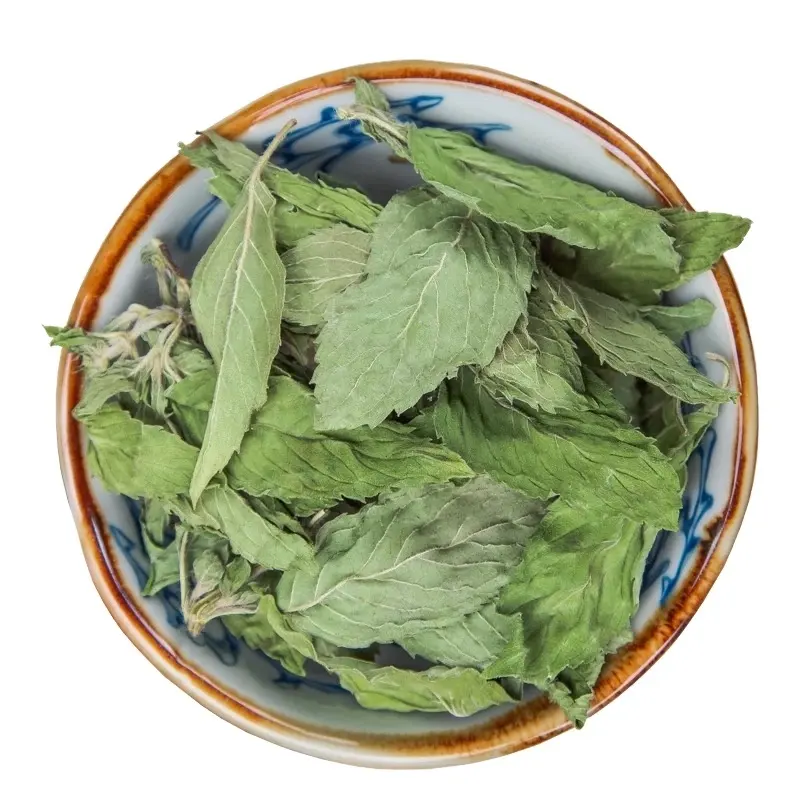
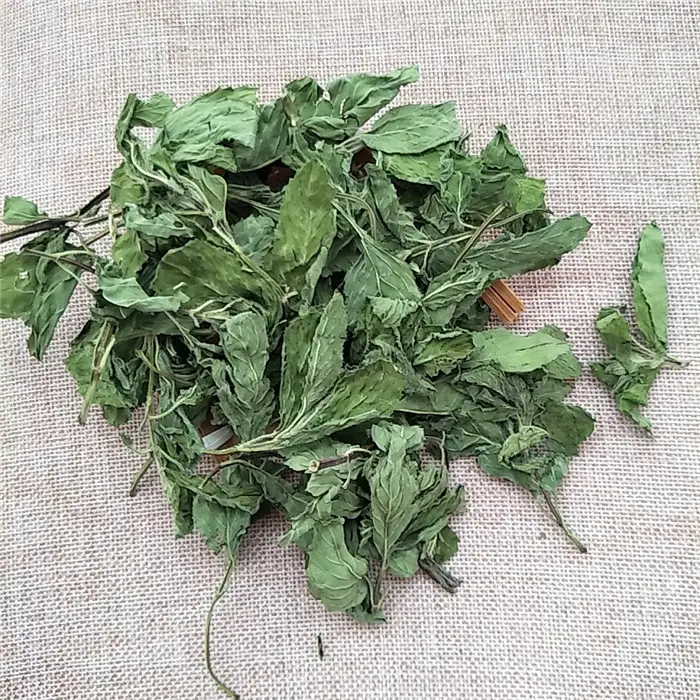

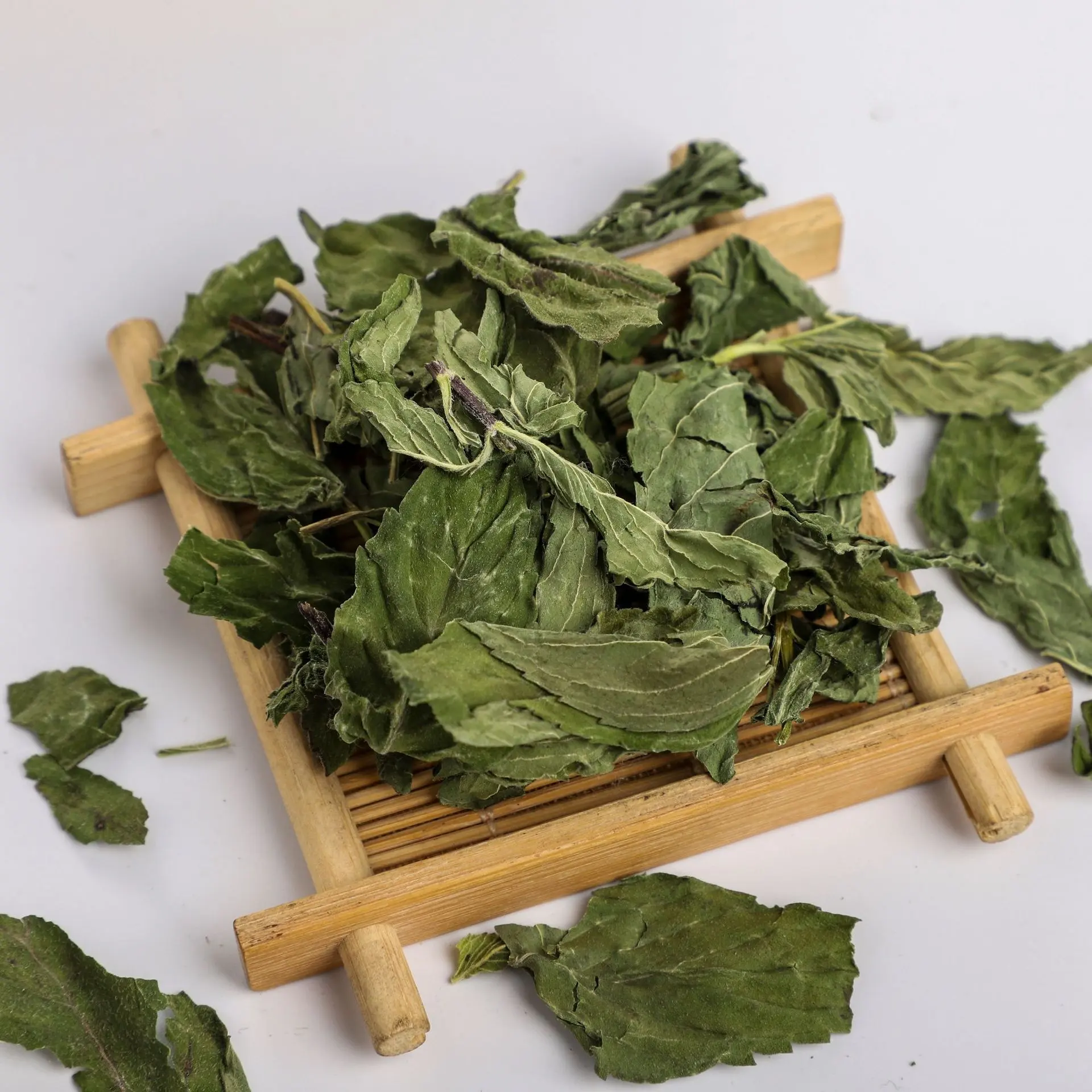


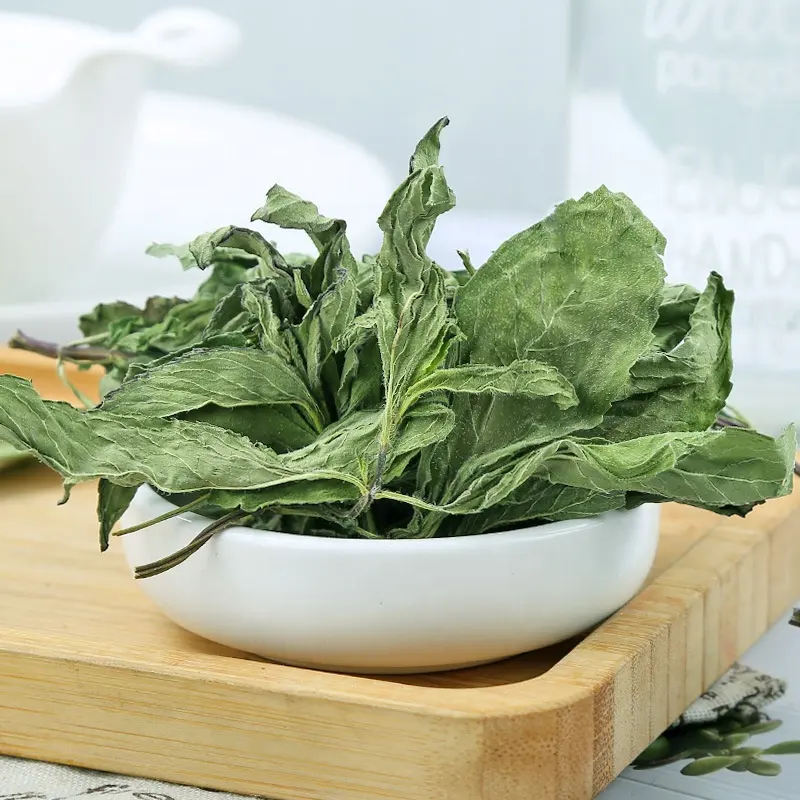
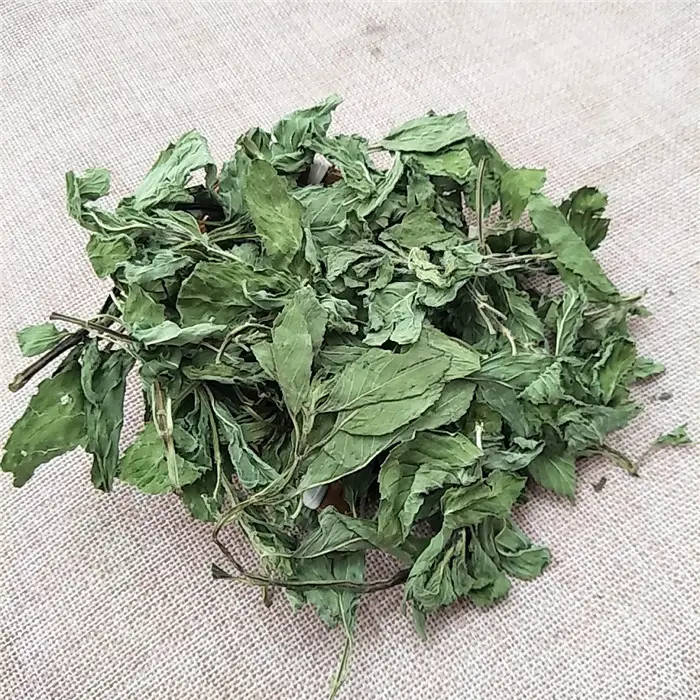
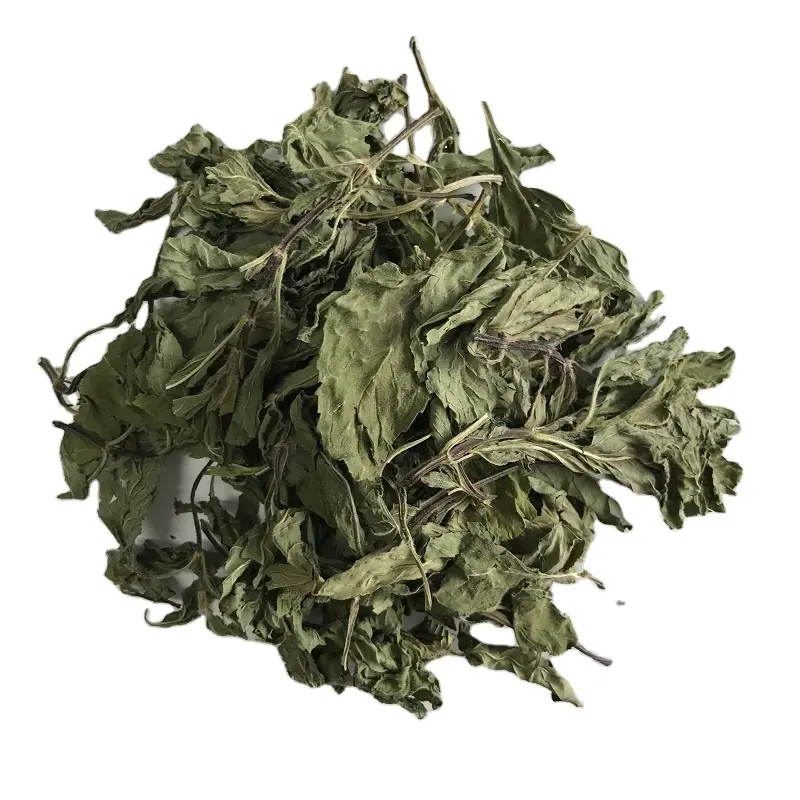


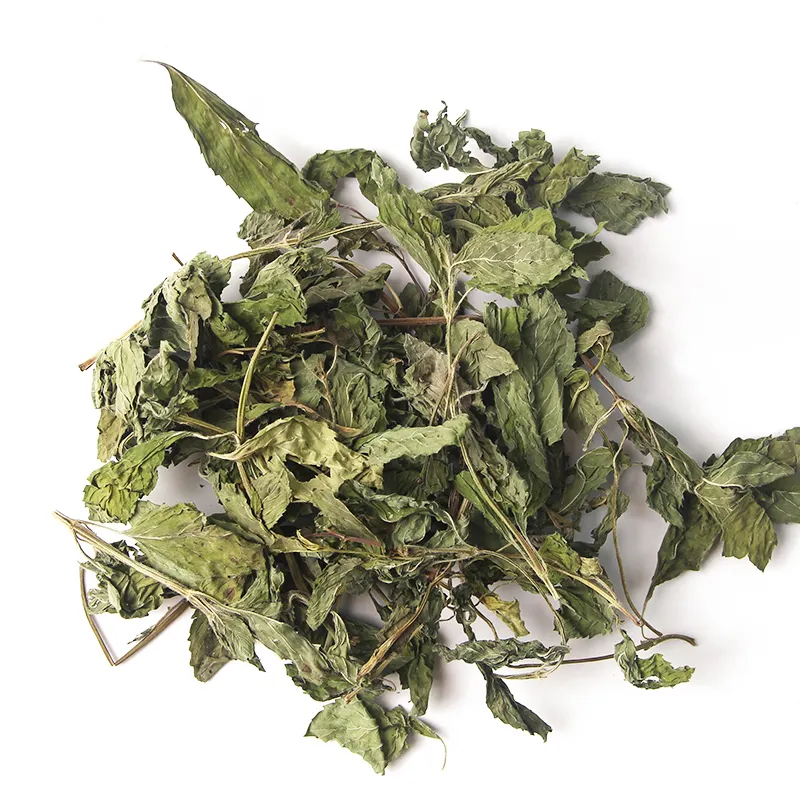
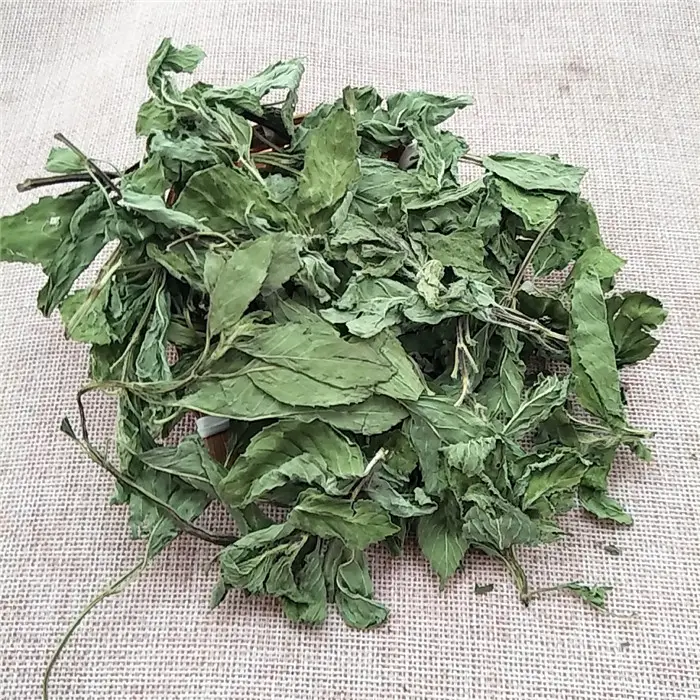
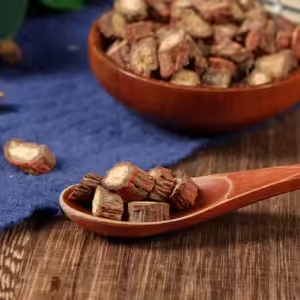
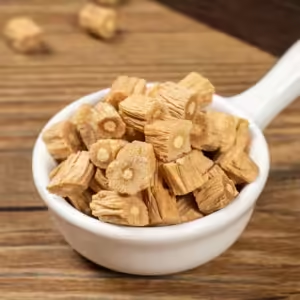
Recensioner
Det finns inga recensioner ännu.